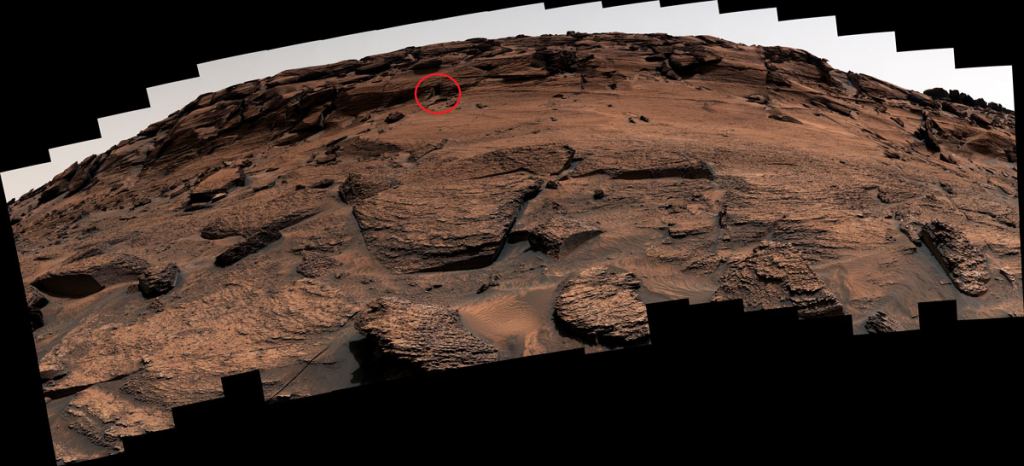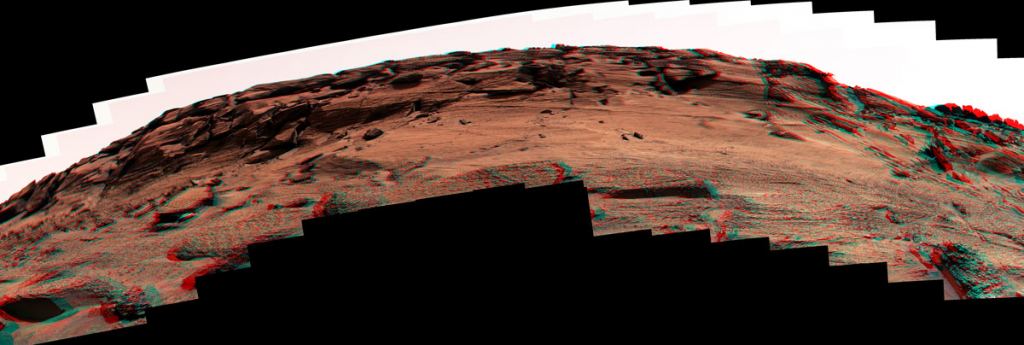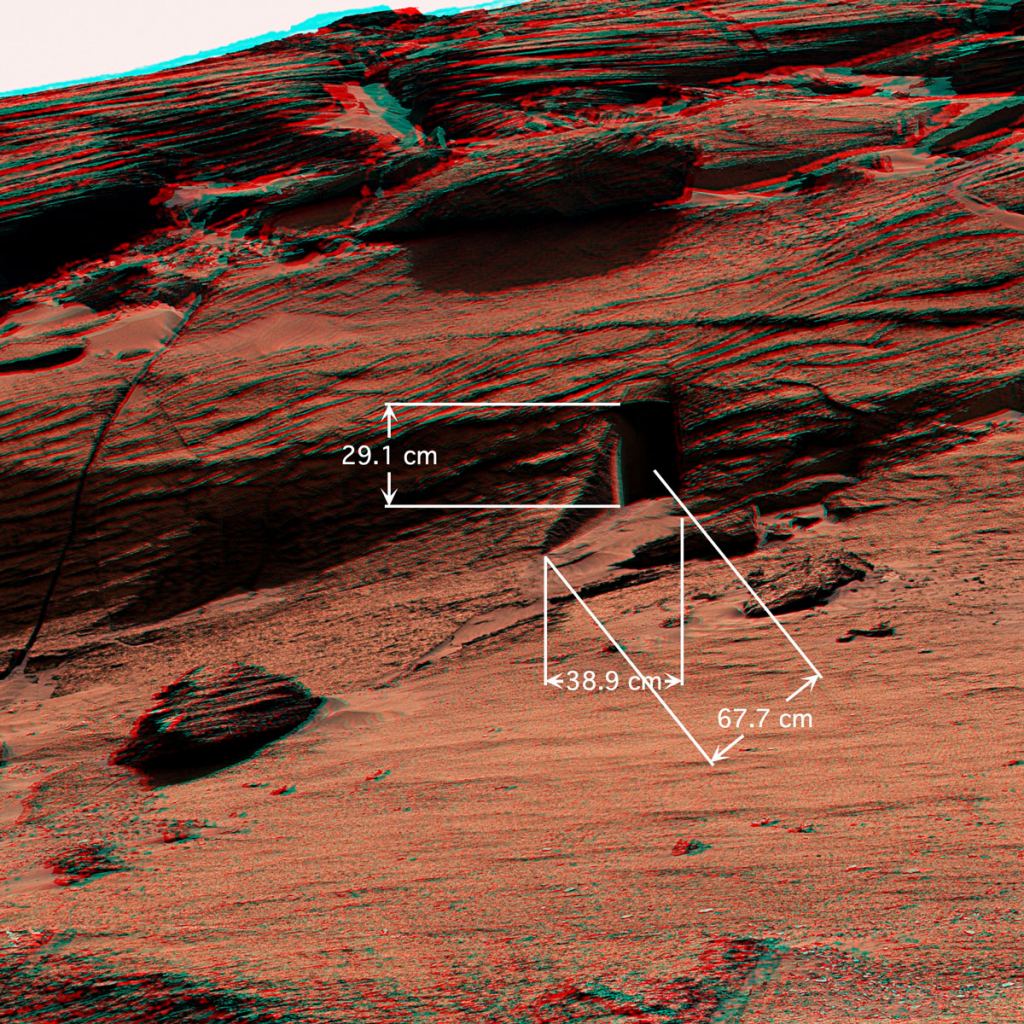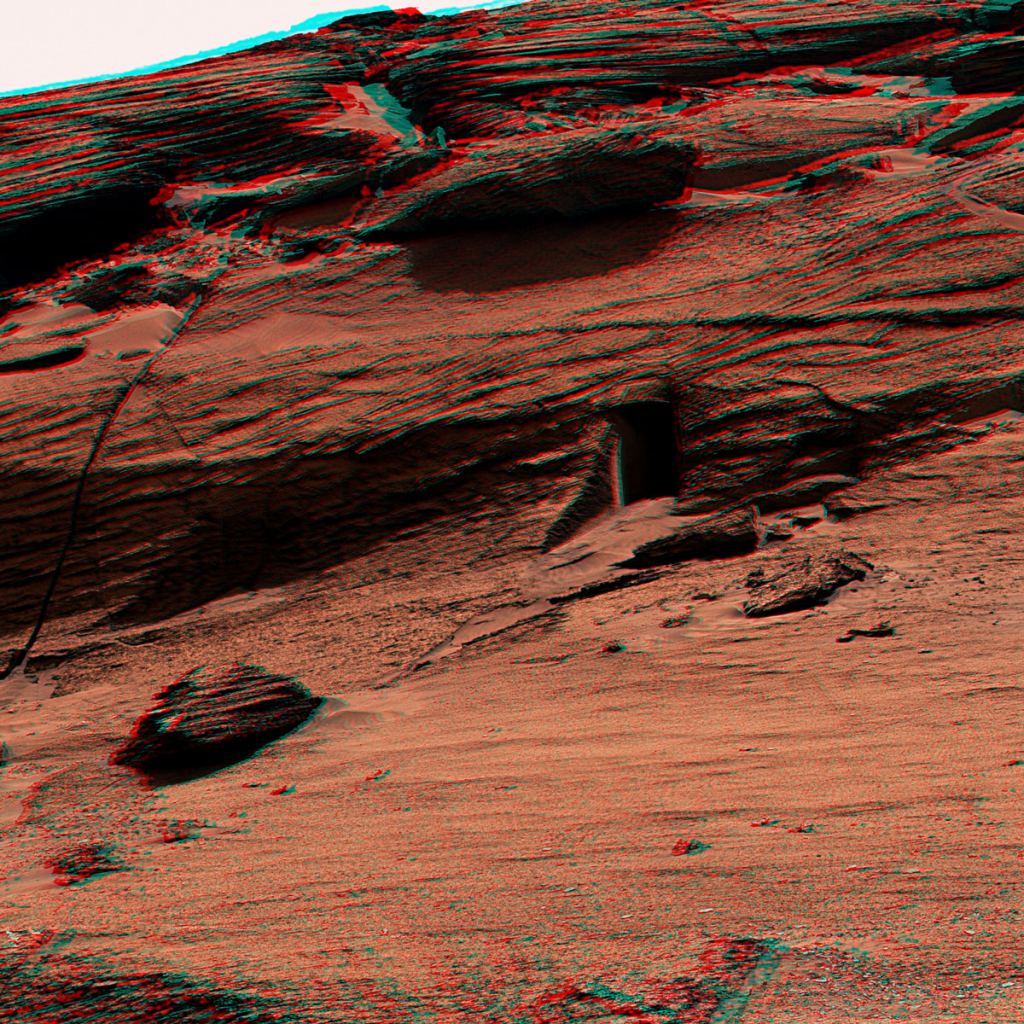Remember all the fuss about the "doorway on Mars" from just last week? Well, this week, NASA issued some more information about the rock mound where the Curiosity rover snapped a pic showing a fracture hole in the rock. It looks like a door, but it's not.
This discovery came as Curiosity was investigating an area on Mount Sharp for clues to the existence of water early in Martian history. It turns out this odd-shaped opening isn't much bigger than a dog door here on Earth. Does that mean Mars is occupied by canines that can squeeze through openings 30 by 40 centimeters (12 x 16 inches)? Wouldn't that be cool? But no, it's not. But, that knowledge is not enough to keep the "Mars aliens" enthusiasts from promoting their favorite ideas about ancient civilizations on the Red Planet.
Debunking the Doorway on Mars Idea
In last week's article about Curiosity's find, we pointed out that this hole in the rocks isn't a mysterious opening to a subterranean world on Mars. Instead, it turns out to be one of many little naturally occurring rock fractures that are pretty common on the planet. We even see similar types of fractures here on Earth.
As you can see from the main panorama posted from the rover and the Earth sandstone in the scene below, the break in the rocks is fairly typical of sandstones and bedrock. If you look closely, you can see individual layers in the rocks. The scene is pretty familiar to anyone who's hiked in desert regions and seen desiccated sandstones or along the Front Range of the Rocky Mountains and seen layers of sandstone near the mountains. In the case of the Rockies, sandstone layers got fractured and upended when the central part of the mountain range jutted out to form the Continental Divide. For millions of years before that, the region was covered by an ancient ocean. The sea bottom and shorelines were layered in fine sands, which hardened to become rock.
We see similar rocks in various locations on Earth where lakes, oceans, and riverbeds have deposited layers of sand. It even happens as a result of wind-driven sand and dust. That action creates sand layers and dunes that eventually harden into rock. So, it's no surprise to see similar features on Mars, given what we know about its surface. And, as on Earth, sandstone on Mars can erode and break pretty easily.
The existence of the shattered rock cliff region where Curiosity is exploring comes as no surprise. And, we shouldn't be surprised to see fracture "holes" where bits and pieces of rock have broken away over time. The same forces at work on Mars also happened on Earth. That's why so much of Mars looks so familiar to us.
Viewing the "Dog Doorway on Mars" in 3D
NASA released some analysis images of Curiosity's Mastcam view of the East Cliffs region to give a good idea of the sizes of the rock layers and what's now coming to be known as the "dog door." The Curiosity imaging team created a 3D anaglyph (viewable with red/blue 3D glasses for those of you playing along at home). Take some time to explore it; chances are you'll find it very familiar-looking.
The team also zeroed in on the region of the "door" and created two images from that. The first is just the close-up, also in 3D anaglyph. Then, they put some size and scale markings on to give you a good idea of what we're really looking at here. No doubt it, this open fracture is intriguing. Not because it's a door to another Martian dimension, but because of what it represents. There are millions of years of Martian geologic history in this image. Mars scientists are studying it closely to understand how this rock formed and what conditions were like when it did.
Where Is Curiosity?
The spacecraft is exploring special regions of Gale Crater on Mars in an effort to find evidence for Mars's watery past. Currently, it's on a rock mound studying the chemistry of the rocks on this section of Mount Sharp (the shroud around Aeolis Mons, the central peak of the crater). As this is written, Curiosity's next two days (Sols 3480-3482) will be spent checking out some "gnarly looking" rocks, analyzing what it finds, and doing a full panoramic imaging sweep specially timed for another spectacular Martian sunset view.
For More Information
Door-shaped Fracture Spotted by Curiosity at "East Cliffs"
 Universe Today
Universe Today




